Inn (Associated spots)
Introduction to associated facilities

Kabuto-ya Ryokan (Japanese style hotel)
- Hinohara Village
- The Culture of the Tama area
Kabuto-ya Ryokan is a thatched-roof hotel nestled in Hinohara-mura Village, where vibrant nature abounds. The thick thatched roof traps air within its layers, so it has excellent heat insulation and is characterized by keeping the interior cool in summer and warm in winter. The thatched roof of Kabuto-ya Ryokan is a helmet style gabled roof built about 250 yeas ago, and has an architectural structure where wood is joined with almost no nails. The hall is divided into a new building of spacious rooms with a hearth and a main building with a hall built from heavy beams. Why don’t you spend a relaxing time feeling the history of the majestic pillars and beams?
Kabuto-ya Ryokan offers a healthy meals course that uses abundant local ingredients such as seasonal wild plants, botan (wild boar meat) nabe (hot pot), fish dishes, and tofu. It is said many tourists come to enjoy the fish dishes that are grilled in the hearth.
2612 Kazuma, Hinohara-mura, Nishitamagun, Tokyo 190-0221
TEL: 042-598-6136
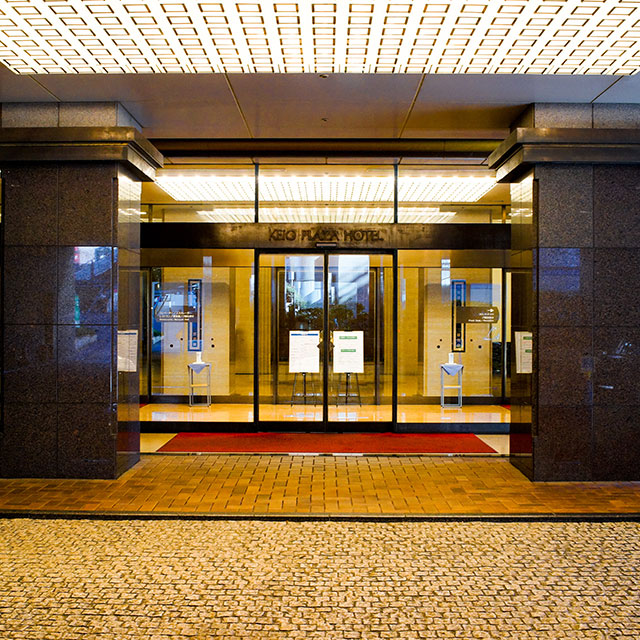
KEIO PLAZA HOTEL HACHIOJI
- Hachiouji City
- The Culture of the Tama area
The elegant interior promises a sophisticated hotel life――. To provide a service of this word as it is written in the official brochure is the Hachioji Keio Plaza Hotel in front JR Hachioji Station. The 15-story building has a banquet hall, restaurant, wedding and reception hall, and 200 guest rooms on the 7th to 14th floors. There are “suite rooms”, high-quality “executive rooms”, and spacious corner rooms, so you can relax in the most suitable room according to your taste and purpose. It also features 7 types of restaurants and bars, including Japanese food, teppanyaki, sushi, western food, Chinese food, bars, and lounges, in order to offer a variety of delicious foods.
14-1 Asahi-cho, Hachioji City, Tokyo 192-0083
TEL: 042-656-3111
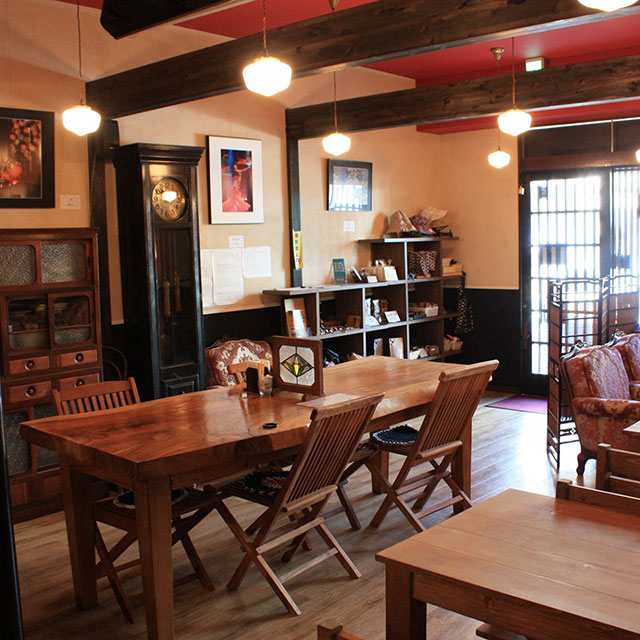
Seiryu kibako (guest house)
- Ome City
- The Culture of the Tama area
Seiryu kibako (guest house) is a guesthouse located along the old Ome Kaido Highway, about a 3-minute walk from JR Ome Station. Many tourists visit this place as a base for exploring Ome City and sightseeing around Okutama Town. Built in 1927, it is a signboard building with a nostalgic look. One of the buildings is designated as a national registered tangible cultural property and an important component in the formation of the Ome landscape.
The inside of the hotel has an elegant and modern atmosphere, as if you had traveled back in time to the early Showa period. Antique furniture such as gramophones, radios, and pendulum clocks decorated about the room form a calm space within.
At the café on the first floor, you can enjoy coffee specially blended by the home-roasted coffee bean shop “Tama World Coffee” in Daimon, Ome City. It seems that there are many fans for this flavor that includes a slight sweetness in the aftertaste.
303-2 Naka-cho, Ome City, Tokyo 198-0082
TEL: 0428-78-4947
Introduction to tourist spots
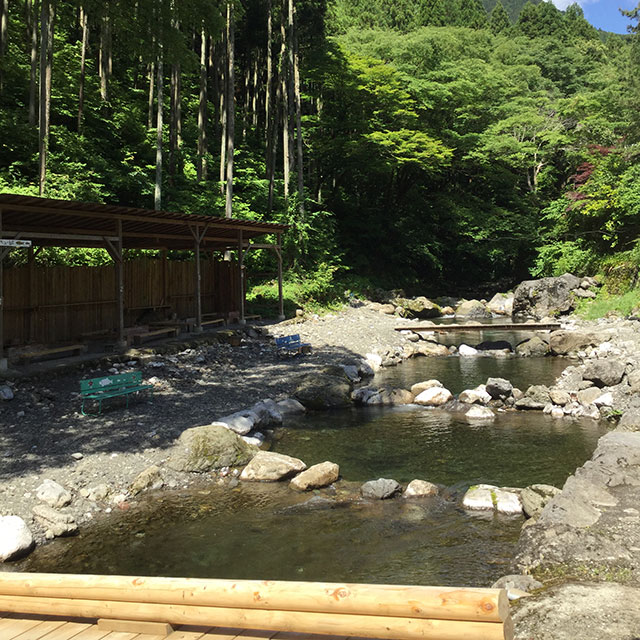
Kanoto-Kokusai-Masu-Tsurijo (Kanoto-Kokusai Trout Fishing Pond)
- Hinohara Village
- The Activity of the Tama area
The “Kanoto-Kokusai-Masu-Tsurijo (Kanoto-Kokusai Trout Fishing Pond), which opened in 1963, is a fishing pond with attractive forest greenery and clear streams. Many tourists visit throughout the fishing season because even children and beginners can easily enjoy this activity.
There is a barbecue area inside the fishing place, and you can enjoy freshly caught fish while looking at the nature and clear stream of Hinohara-mura Village. There are also the popular sightseeing spots “Kanoto-iwa Rock” and “Hossawa-no-Taki Waterfall” in its neighborhood so you can stop by these as well while sightseeing.
3387 Kanoto, Hinohara-mura, Nishi-tama-gun, Tokyo 190-0203
TEL: 042-598-0132

Kobayashi Family Residence
- Hinohara Village
- The Culture Foods of the Tama area
The “Kobayashi Family Residence”, which was built around 1700 in the middle of the Edo era, is an old Japanese style house located in the mountains of Hinohara-mura Village at an altitude of 750 meters. It is a valuable private mountain house built over 300 years ago and was designated as a National Important Cultural Property in 1978.
Charcoal making has been practiced in Hinohara-mura Village for a long time, and charcoal kilns and huts are still kept in good condition. Here you can get a glimpse of the lives of people who have lived in harmony with nature.
When heading to the “Kobayashi Family Residence”, you can walk along the mountain trail or use the dedicated monorail. Though monorails are often thought of as being used as load carriages or other work, it seems many tourists come to enjoy the monorail since it is rare for one to be used for passengers.
* Reservations are required by phone on the day prior to boarding.
Address:4994 Hinohara-mura, Nishi-tama-gun, Tokyo 190-0203
TEL: 090-5543-0750

Ginza Akie Sashiko-kan Hall
- Hinohara Village
- The Culture Foods of the Tama area
“Ginza Akie Sashiko-kan” Hall which is located in the deep mountains of Hinohara-mura Village, is the facility for displaying of the works representative of Japan’s Sashiko (Traditional Japanese hand embroidery stitches) by the artist, Ginza Akie who has five directly managed stores nationwide mainly in Tokyo, and operates 27 classrooms.
Sashiko is a traditional Japanese hand embroidery stitching technique where lines are embroidered on an indigo cloth with white thread. Ginza Akie is characterized by a modern arrangement of the classic sashiko patterns, and the works are dyed with indigo dye and vegetable dye. Using cotton threads of different thickness skillfully in the shippo pattern (classic cloisonné tie) or hemp leaf design, even portraits can be expressed with sashiko.
6128 Nango, Hinohara-mura, Nishi-tama-gun, Tokyo 190-0223
TEL: 042-598-6200
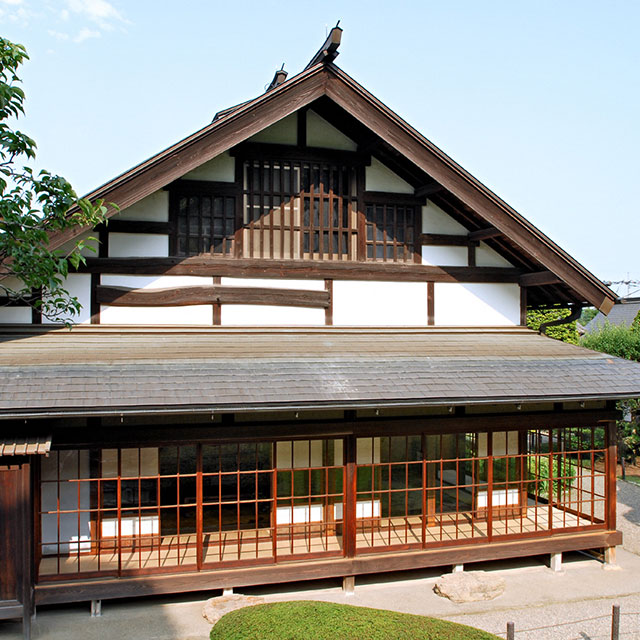
Ome City Yoshikawa Eiji Memorial Hall
- Ome City
- The Culture Foods of the Tama area
The “Ome City Yoshikawa Eiji Memorial Hall”, was reopened in September 2020. It was constructed with a new main building where the author Yoshikawa Eiji spent much time writing masterpieces such as “Miyamoto Musashi” and “Shin Heike Monogatari (The New Tale of the Heike) etc., along with a new exhibition building.
Yoshikawa Eiji had lived in Yugi Yoshino-mura Village (now Yugi Town in Ome City) for 10 years since 1944 and was where he had written his masterpiece “Shin Heike Monogatari (The New Tale of the Heike).
Yoshikawa Eiji who had tried hard to build the public hall in Yoshino-mura Village and been on friendly terms with the people in this community died in 1962 at the age of 70. In the same year his achievement was given the title of the Honorary Citizen by Ome City.
Though the new exhibition building is open when only the events held, the main building is normally open to the public. You can also visit the study room.
1-101-1 Yugi-machi, Ome City, Tokyo 198-0064
TEL: 0428-74-9477
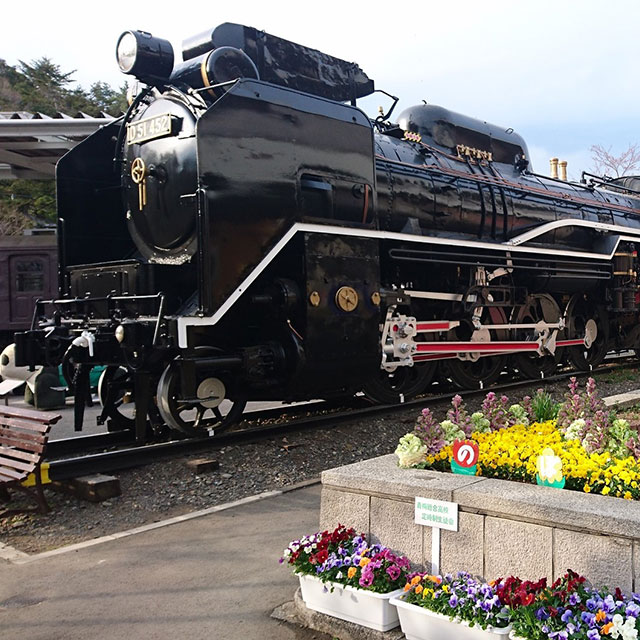
Ome Railway Park
- Ome City
- The Culture of the Tama area
Ome Railway Park is a park where real railway vehicles are preserved and exhibited. In 1962, the Japanese National Railways (currently JR) at that time opened this park to commemorate the 90th anniversary of the opening of the Japanese railway. In the park, stream locomotive and railway vehicles such as the “D51” and “0 series Shinkansen train-car” and rail cars representative of Japan in active service during the Meiji, Taisho, and Showa eras are exhibited outdoors. In addition, at the memorial hall, explanatory materials for railways, mainly models, are available for public viewing. In this facility you can enjoy learning about railways while touching history.
There is also various playground equipment themed on the vehicles so that even small children and enjoy it.
2-155 Katsunuma, Ome City, Tokyo 198-0041
TEL: 0428-22-4678
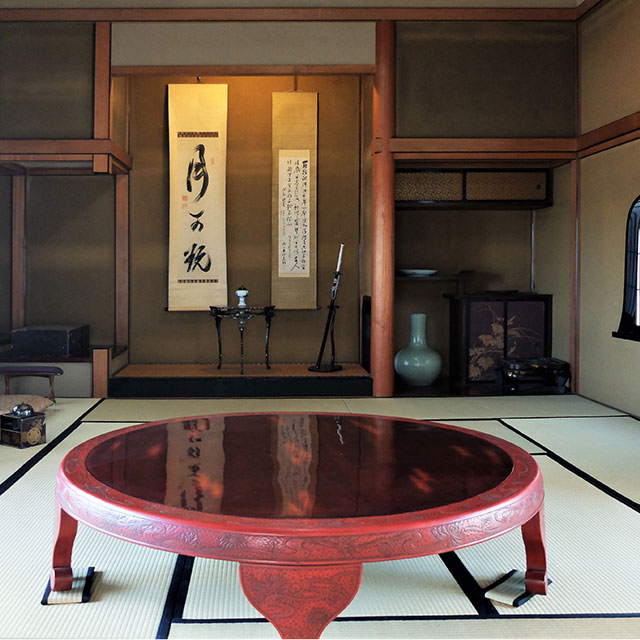
Ome-shuku Tsukumo-tei Residence
- Ome City
- The Culture of the Tama area
“Tsukumo-tei” was a residence built by the politician Tsukumo Kunitoshi from Ome City. Construction was from 1931 to 1940. Since Tsukumo Kunitoshi worked as a member of the House of Representatives from the early Showa Era into the post-war period, high government officials and many celebrities visited there in those days. Currently, it is open as a history museum. Letters and drawings from historical persons such as Sakamoto Ryoma and Kondo Isami and other related historical materials, are exhibited. Other special exhibitions are also held at various times. This location was designated as a national registered tangible cultural property (building).
The building was built in collaboration with palace carpenters invited from Kyoto and carpenters, masons, and Tatami craftsmen in Ome City. Though it is a pure Japanese-style building, it also incorporated modern elements such as using a glass door to separate it from the porch and using some types of plaster. The ranma (a transom above a door, window, fusuma or shoji) and ceiling are decorated with luxurious craftsmanship. Why don’t you look at the designs scattered all over the place and think about the craftsmen’s commitment at that time.
The facility also has a teahouse and can be used as a rental gallery.
72-2 Sumie-cho, Ome City, Tokyo 198-0084
TEL: 0428-24-2481
Seasons
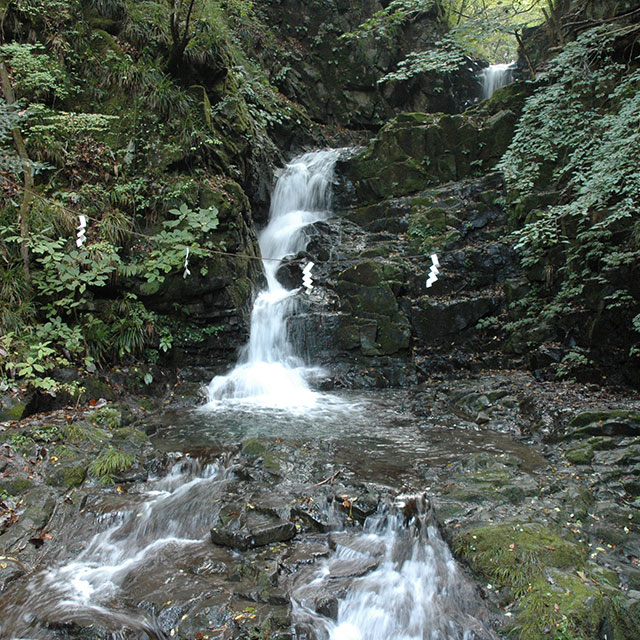
Kuzuryu-jinja Shrine/Fall
- Hinohara Village
- The Seasons of the Tama area
Kuzuryu-jinja Shrine is located in the Kazuma forest in Hinohara-mura Village at the uppermost stream of Akikawa-keikoku Valley. It is about 5 minutes walk to the west of the Tokyo Municipal Road 206 route from the Kazuma bus stop. In 1545 during the Northern and Southern Dynasties, Nakamura Igamori Fujiwara-no Nobuyoshi of the Kazuma-gumi clan who pioneered settlement in this area branched out and established the main shrine in Togakushi-mura Village.
Only 150 meters away from the Kuzuryu-jinja Shrine is the 10 meters high Kuzuryu-no-Taki Waterfall. Before the establishment of Kuzuryu-jinja Shrine, it was called “Yoko-no-Taki (Yoko Waterfall) because there was an active road and an important highway leading to other prefectures next to the waterfall. After the establishment of Kuzuryu-jinja Shrine, many believers were seen standing under the waterfall, it is said that it was named “Kuzuryu-no-Taki (Kuzuryu Waterfall)”. It is now known as a sacred place and many celebrities also visit.
7076 Kazuma, Hinohara-mura, Nishi-tama-gun, Tokyo 190-0221
TEL: 042-598-6135
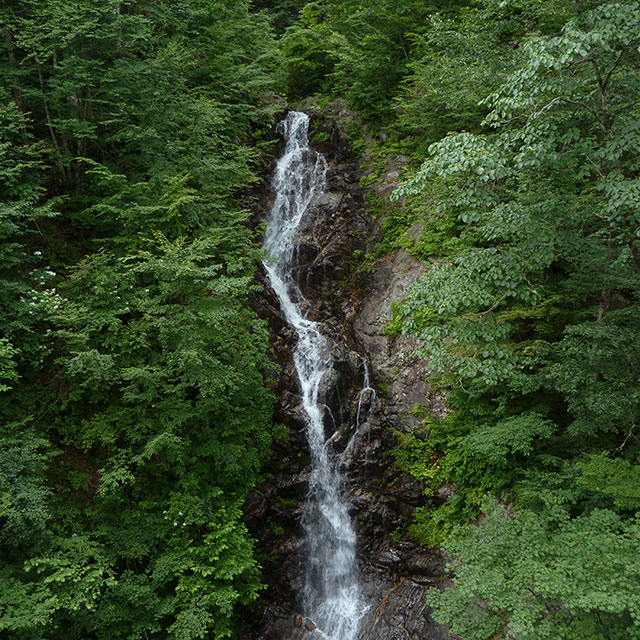
Mito-otaki Large Waterfall
- Hinohara Village
- The Seasons of the Tama area
The Mito-otaki Large Waterfall is located about 20 minutes on foot from the promenade in the mountain park “Hinohara Tomin no Mori”, which is along the mountain trail of Mito-san Mountain (1531 meters above sea level), one of the 300 famous mountains in Japan. There are benches around the waterfall where you can relax and enjoy the magnificent view of the waterfall. During the coldest part of winter it becomes an icefall that is quite worth seeing.
The view from Takimi-bashi Bridge is also recommended. You can enjoy the whole view of Mito-otaki Waterfall from the suspension bridge over the stream downstream from the waterfall. A stream of water flowing down the rock surface from a height of 30 meters is a healing sight for visitors seeking nature.
Kazuma, Hinohara-mura, Nishi-tama-gun, Tokyo 190-0221
TEL: 043-598-1011 (Hinohara-mura Village Office)

Tengu-Taki Waterfall
- Hinohara Village
- The Seasons of the Tama area
Tengu-Taki Waterfall, which is 38 meters high, slides down along a huge rock fault surface about 20 meters across. After walking about 500 meters along the forest road from the Senzoku bus stop on Tokyo Municipal Road 205, and then a 500 meter climb up along the Senzoku-zawa Mountain Stream from the entrance to the road up a mountain, the waterfall appears.
Though it is 38 meters in hight, it slowly flows down with a quiet noise so that you can distinctly see the flow of the water.
When you stand in front of the waterfall, you can see the symmetry that spreads from top to bottom as it flows down. The contrast between the wet rock surface and the greenery that grows naturally, and the white waterfall running down is a photogenic landscape. It is also a perfect place to take a rest while gazing at the scenery below.
Mitsugo, Hinohara-mura, Nishi-tama-gun, Tokyo 190-0211
TEL: 042-598-1011 (Hinohara-mura Village Office)

Uchinuma-Kinoko-En (Mushroom Garden)
- Ome City
- The Seasons of the Tama area
Uchinuma-Kinoko-En is a mushroom garden where you can buy directly from the grower and even pick your own mushrooms.
The feature is that mushrooms are grown on stacked logs in clean environments without air and water pollution. You can enjoy a variety of mushrooms for each season, such as Maitake, Kuritake, Hiratake, Mukitake and Nameko.
At the on-site light meal café “Pirutsu”, you can enjoy simple meals featuring mushrooms in the garden such as pizza, pasta, and sandwiches.
1-90 Nariki, Ome City, Tokyo 198-0001
TEL: 0428-74-4528
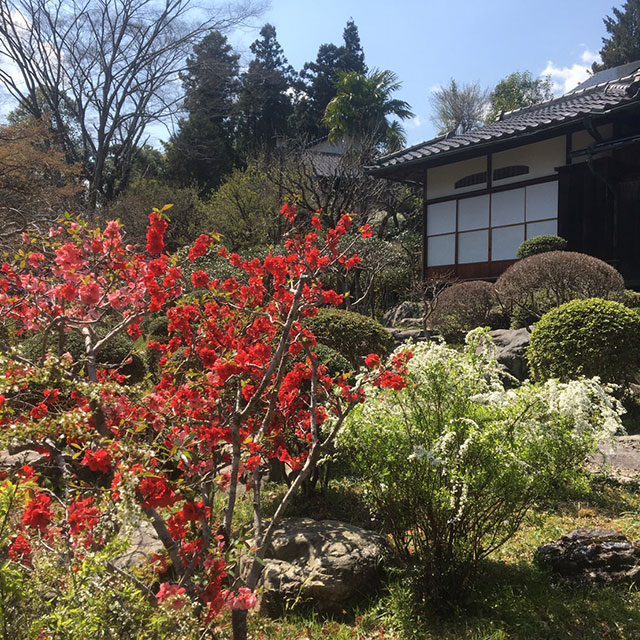
Hinata-wada Rinsen Teien Garden
- Ome City
- The Seasons of the Tama area
Hinata-wada Rinsen Teien Garden was a Japanese garden owned by the early Showa era politician Tsukumo Kunitoshi from Ome City. It seemed to be named “Hinata-wada Rinsen Teien Garden” because Tsukumo Kunitoshi called it “Rinsen Baien Garden”. Currently, it was donated to Ome City and is open to the public for free.
In the park plum and weeping cherry blossoms bloom in spring, golden-rayed lilies open in summer and sasanqua in winter, and you can enjoy beautiful scenery from season to season. You can also see the clear stream of the Tama-gawa River from the garden because it is located along the Tama-gawa River Valley. It is not well known to anyone but the locals, so you can spend a relaxing time in this quiet space.
2-271 Hinatawada, Ome City, Tokyo 198-0046
TEL: 0428-24-2481
Introducing long established stores/Tama’s Gourmet
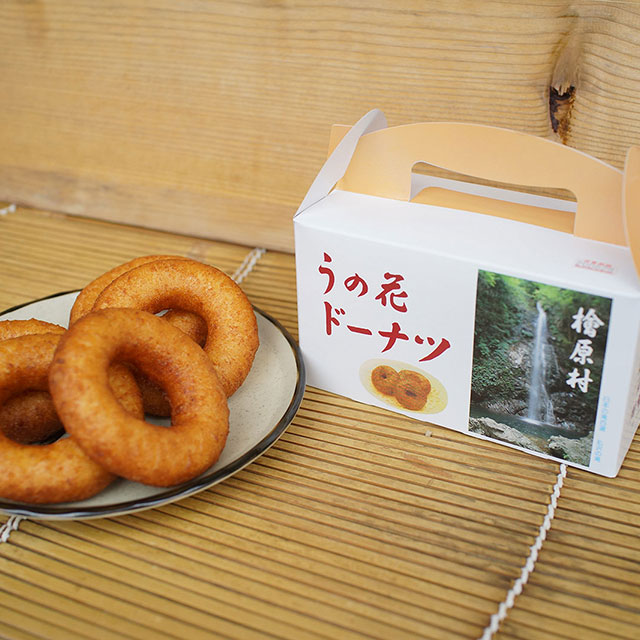
Chitose-ya Shop
- Hinohara Village
- The Foods of the Tama area
Chitose-ya, a tofu shop on the way to Hossawa-Taki Waterfall in Hihohara-mura Village, sells a traditional handmade tofu made from the pure water of nearby Akikawa River and domestic soybeans.
Not only do the visitors want this tofu but they also really want to have “Unohana donuts”. It is a popular product made from tofu pulp and rich tasting soymilk mixed into the dough. However, these may be sold out on holidays during tourist season. With its chewy texture, the flavor of soybeans and faint sweetness spread throughout your mouth as you eat them. Freshly fried food is also offered at the store, and it is said that 1200 donuts are manufactured a day. The donuts are loved not only by tourists but also by the locals for many years. The tofu flavor ice cream is also a standard, and it is said that many fans enjoy its mellow richness and light sweetness.
5557 Motoshuku, Hinohara-mura, Nishi-tama-gun, Tokyo 190-0214
TEL: 042-598-0056
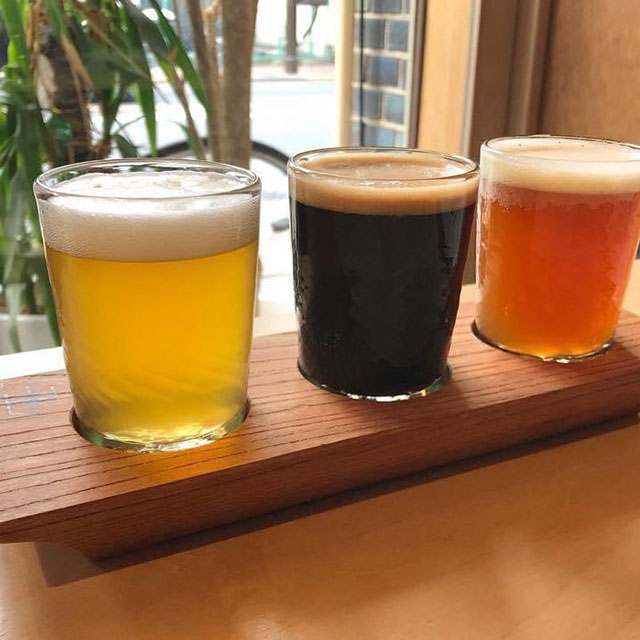
Ome Bakushu Sake
- Ome City
- The Foods of the Tama area
About a 3 minute walk from JR Ome Station. “Ome Bakushu” along the old Ome Kaido Highway is a beer bar where you can enjoy drinking authentic craft beer. The store, which was renovated from a former cosmetic store, has a retro atmosphere look.
You can enjoy the tastes of the area around Ome City with a lineup of craft beers such as Okutama’s brewery “VERTERE” and Fussa’s Sake brewery “Ishikawa-shuzo Brewery”.
In addition, local restaurants show love for their hometown by providing rare Ome pork and vegetables by organic farmers from Ome City on their menus.
145 Hon-cho, Ome City, Tokyo 198-0083
TEL: 042-878-3106
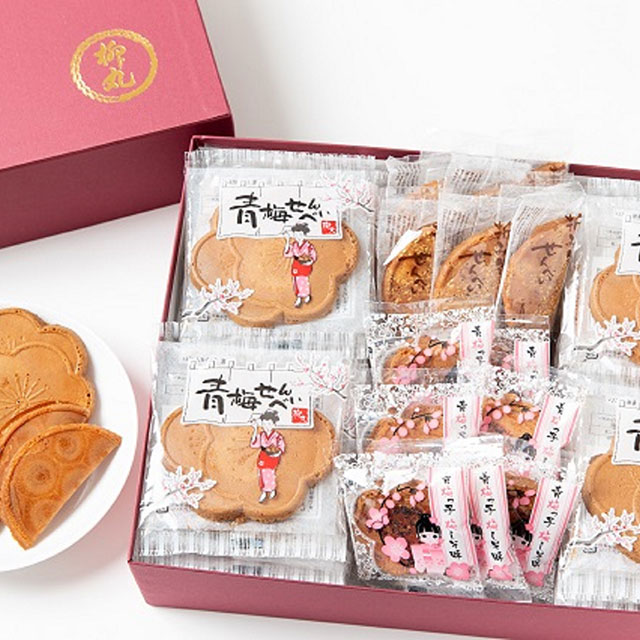
Ryumaru Nishiwake factory-owned outlet
- Ome City
- The Foods of the Tama area
Chitose-ya, a tofu shop on the way to Hossawa-Taki Waterfall in Hihohara-mura Village, sells a Ryumaru is a long-established Japanese and Western confectionary store founded in 1945. They have 5 stores in Ome City and 1 store in Hamura City. A popular product is the plum-shaped “Ome Senbei (rice cracker)”. Ryumaru has been making the Ome Senbei, loved as a specialty of Ome City for over 100 years, since 1975.
The main ingredients are eggs, flour, and sugar. The more you chew, the more the flavor of the eggs spreads in your mouth.
Nishiwake factory-owned outlet is a direct sales store attached to the new factory that opened at the end of March 2019. In addition to “Ome Senbei” and Japanese sweets, “Ome Noble” and “Butter Sable” are on sale.
3-104 Nishiwake-cho, Ome City, Tokyo (Nishiwake factory-owned outlet) 198-0044
TEL: 0428-22-5349

